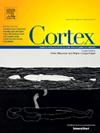Revisiting the electrophysiological correlates of valence and expectancy in reward processing – A multi-lab replication
IF 3.2
2区 心理学
Q1 BEHAVIORAL SCIENCES
引用次数: 0
Abstract
Two event-related brain potential (ERP) components, the frontocentral feedback-related negativity (FRN) and the posterior P300, are key in feedback processing. The FRN typically exhibits greater amplitude in response to negative and unexpected outcomes, whereas the P300 is generally more pronounced for positive outcomes. In an influential ERP study, Hajcak et al., (2005) manipulated outcome valence and expectancy in a guessing task. They found the FRN was larger for negative outcomes regardless of expectancy, and the P300 larger for unexpected outcomes regardless of valence. These findings challenged the dominant Reinforcement Learning Theory of the ERN. We aimed to replicate these results within the #EEGManyLabs project (Pavlov et al., 2021) across thirteen labs. Our replication, including robustness tests, a PCA and Bayesian models, found that both FRN and P300 were significantly modulated by outcome valence and expectancy: FRN amplitudes (no-reward - reward) were largest for unexpected outcomes, and P300 amplitudes were largest for reward outcomes. These results were consistent across different methods and analyses. Although our findings only partially replicate the original study, they underscore the complexity of feedback processing and demonstrate how aspects of Reinforcement Learning Theory may apply to the P300 component, reinforcing the need for rigorous ERP research methodologies.
重新审视奖赏处理中价和期望的电生理相关性——一项多实验室复制。
两个事件相关脑电位(ERP)成分,即前额中央反馈相关负性(FRN)和后P300,是反馈加工的关键。FRN在面对消极和意外结果时通常表现出更大的振幅,而P300在面对积极结果时通常表现得更明显。在一项有影响力的ERP研究中,Hajcak等人(2005)在猜测任务中操纵了结果效价和期望。他们发现,与期望无关的负面结果的FRN更大,而与效价无关的意外结果的P300更大。这些发现挑战了神经网络的主流强化学习理论。我们的目标是在13个实验室的#EEGManyLabs项目(Pavlov et al., 2021)中复制这些结果。我们的复制,包括稳健性测试、PCA和贝叶斯模型,发现FRN和P300都受到结果效价和期望的显著调节:FRN振幅(无奖励-奖励)在意外结果中最大,而P300振幅在奖励结果中最大。这些结果在不同的方法和分析中是一致的。虽然我们的研究结果只是部分重复了原始研究,但它们强调了反馈处理的复杂性,并展示了强化学习理论的各个方面如何适用于P300组成部分,从而加强了对严格的ERP研究方法的需求。
本文章由计算机程序翻译,如有差异,请以英文原文为准。
求助全文
约1分钟内获得全文
求助全文
来源期刊

Cortex
医学-行为科学
CiteScore
7.00
自引率
5.60%
发文量
250
审稿时长
74 days
期刊介绍:
CORTEX is an international journal devoted to the study of cognition and of the relationship between the nervous system and mental processes, particularly as these are reflected in the behaviour of patients with acquired brain lesions, normal volunteers, children with typical and atypical development, and in the activation of brain regions and systems as recorded by functional neuroimaging techniques. It was founded in 1964 by Ennio De Renzi.
 求助内容:
求助内容: 应助结果提醒方式:
应助结果提醒方式:


